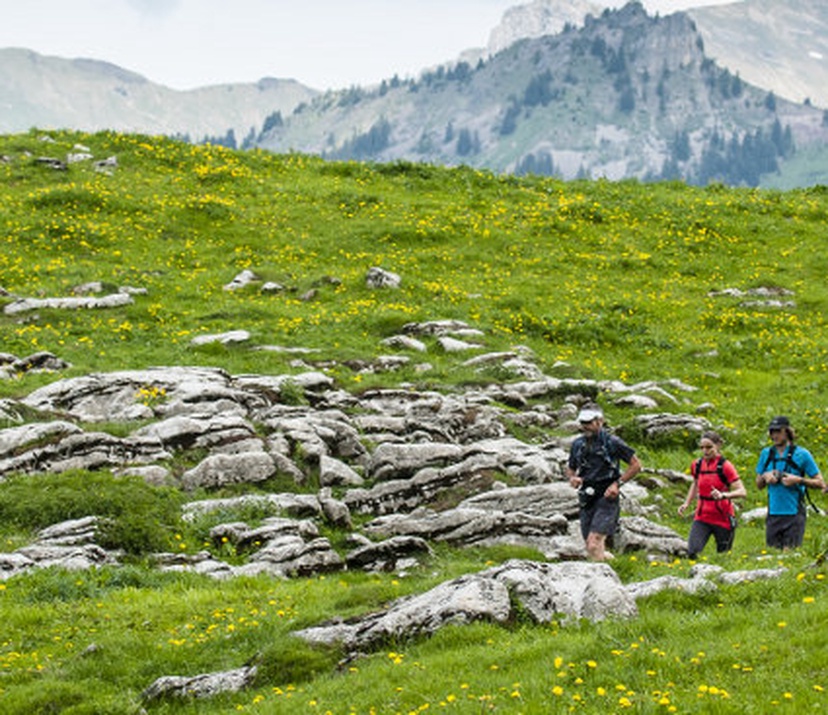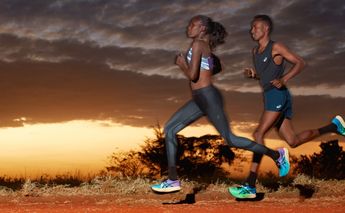Trail running is becoming increasingly popular throughout Europe. But how does it differ from running on the road and what’s the best way to get started? We asked Swiss long-distance runner Viktor Röthlin about making the switch.
As well as being one of Europe’s best marathon runners, ASICS ambassador Viktor Röthlin is also an avid trail runner. Not surprisingly for an athlete who lives in the Swiss Alps.
For Viktor, the biggest appeal of the trails is the added freedom.
“Running on the road is about following the road,” he says, “while trail running means I can decide my own way. There are so many more options and that for me makes the big difference.”
His favourite trail is on the Stanserhorn, a stunning peak in the Alps located almost exactly in the centre of Switzerland.
“The Stanserhorn I can do directly from out of my house. Up there, 1898 meters above sea level, I have a wonderful view over my whole home region and far beyond.”
A different kind of workout
Trail running is not just about stunning views however, it also provides a different kind of workout from the road.
“On the trails I usually run uphill,” says Viktor, “that builds up more muscles in a very specific way, which is a great benefit for my road racing.”
And the different terrain means you need to change your style , the main reason being the uneven surfaces on most trail paths.
You’ll need to carefully balance your speed with safety . Go too fast and you could soon find yourself falling down or suffering an injury.
“When I set my pace on a difficult trail, I run more on my forefeet than when I take it easy,” says Viktor. “That way I can touch the ground very precisely and as little as possible.
“I find that longer ground contact makes accidents like a twisted ankle more likely to happen.”
Making the switch
You can give trail running a try at any time – you won’t need to have a specific training plan other than what you’re already doing on the road and, according to Viktor, you won’t have to choose any specific trails as a beginner.
The key instead is to get the technique right and make sure you have the right gear. Here are a few tips to help you make the transition from road running:
- Build up slowly – trails tend to be harder on the body than roads so don’t put in 100% effort on the first attempt. Try to build up the distance and speed so you become comfortable with the terrain.
- Take shorter strides – trail runs are full of big hills, which will require more effort. So try not to bend over as this can prevent air from flowing into your lungs. Shorter strides will help you keep your back straight and your lungs at full capacity.
- Mix up your training – when preparing for a trail run try combining short, fast runs with longer, slower ones. This will help you prepare for all stages of a race from the hills to the flat stretches.
- Keep your eye on the trail – there are plenty of obstacles like tree roots, twigs and rocks which you won’t find on the road so try to look 4 or 5 paces ahead of you so you know what to expect in your stride.
- Control your speed on downhills – it’s tempting to run fast down a hill, but the trails can be dangerous, so make a conscious effort to slow your pace to avoid injury on the descent.
The right gear
As well as a change in running technique, the rigours of mountain trails also demand sturdy gear . It’s crucial to have a good pair of trail running shoes before you head out.
“The right equipment helps a lot to have more fun and make a trail run more enjoyable,” says Viktor.
“So many runners do trail runs with normal running shoes. That’s something I just can’t understand. It’s like going hiking with your skiing shoes!
“For trail racing your shoes have to be very lightweight, flexible and close to the ground . I need to feel that my ground impact goes directly into my pace. When I train I use different shoes for different paces. Basically, the faster I run, the lighter and more direct my shoes need to be.”
Ready to give trail running a try?
Check out the FUJI trail line – a range of running shoes designed to help you make the most out of trail running, whatever your level:
- GEL-FUJI TRAINER
- GEL-FUJI RACER
- GEL-FUJI ATTACK



